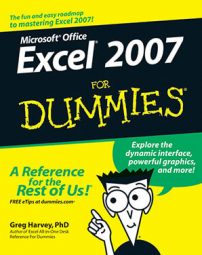When you're ready to enter data to a worksheet in a Microsoft Excel 2007 workbook, there are a few simple guidelines (a kind of data-entry etiquette) that you should keep in mind:
Try to organize your information in tables of data that use adjacent (neighboring) columns and rows. Start the tables in the upper-left corner of the worksheet and work your way down the sheet, rather than across the sheet. When it’s practical, separate each table by no more than a single column or row.
When you set up these tables, don’t skip columns and rows just to “space out” the information. Instead, you can add white space between information in adjacent columns and rows by widening columns, increasing row heights, and changing the alignment.
Reserve a single column at the left edge of the table for the table’s row headings.
Reserve a single row at the top of the table for the table’s column headings.
If your table requires a title, put the title in the row above the column headings. Put the title in the same column as the row headings.
Given all the real estate that comes with each and every Excel worksheet — 16,384 columns and 1,048,576 rows — you’d think conserving space would be one of the last things you’d have to worry about. However, space conservation in the worksheet equals memory conservation. The amount of computer memory available to Excel determines the ultimate size of the worksheet you can build, not the total number of cells. When you run out of memory, you’ve effectively run out of space — no matter how many columns and rows are still left to fill. Therefore, to maximize the information you can get into a single worksheet, always try to keep your data close together.

